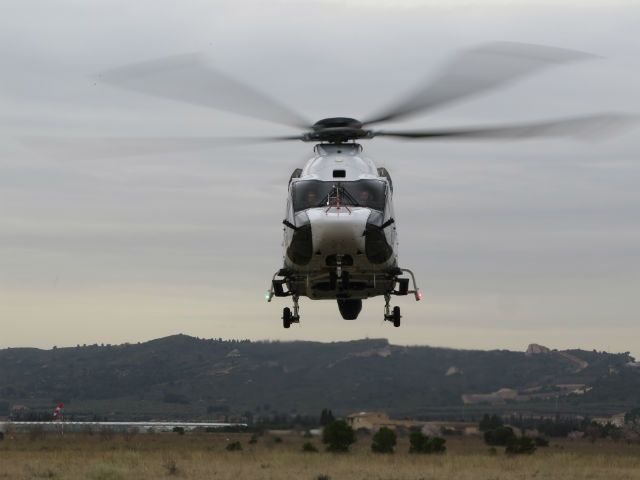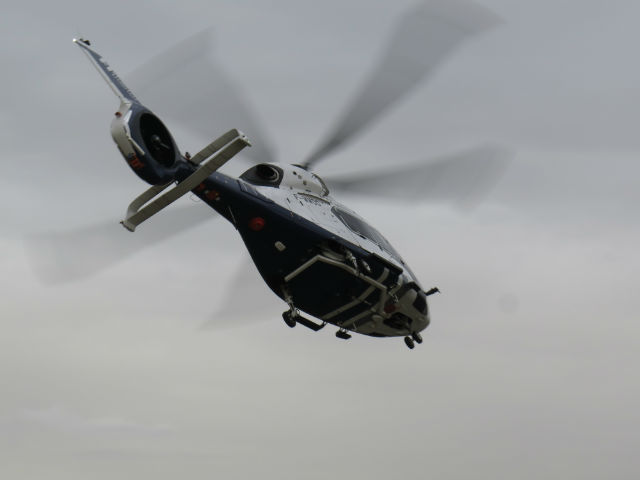A year on from its launch at 2015’s HAI show, Airbus Helicopters is beginning the first stage of the sales push for its new H160 medium twin as flight test activity continues to ramp up on the new model.
Bernard Fujarski, head of the H160 programme, says 2016 marks the “start of commercialisation” of the rotorcraft. “We will start to talk with customers and sign [letters of intent] LoIs with them and enter into the process of negotiations.
“We are not looking for LoIs to make news around the programme, it is more to identify the launch customers and really start partnership negotiations and discussions to define together where and under what conditions they will be able to be concluded.”
With some 100h of flight testing so far accumulated, the airframer hopes to be in a position by year-end to accurately define the performance characteristics of the helicopter, notably around maximum take-off weight, which is still given as 5.5-6t.

Dominic Perry/Flightglobal
It currently has two prototypes flying, with PT2 – the first to be fitted with the new 1,300shp (969kW) Turbomeca Arrano engines – joining the test fleet in late January. Since then it has racked up around 10h, says Fujarski.
The initial flight-test article is still equipped with the Pratt & Whitney Canada PW210 engines which have since been dropped from the programme. PT1 will therefore be temporarily grounded from early March to have the Turbomeca powerplants installed.
A third prototype will join the fleet in early 2017, which will also be the first to incorporate a design change derived from the initial flight-tests and simulations, he says.
This sees the avionics master boxes moved from the rear to the nose of the H160, to improve the centre of gravity and correct a nose-up attitude when hovering.

Dominic Perry/Flightglobal
Otherwise, the configuration is unchanged, with both the canted fenestron tail rotor and biplane horizontal stabiliser “working as predicted”, says Fujarski.
“We are conducting some performance checks but we don’t expect any bad news. The fenestron is working a little bit better than expected; it is asking for a little bit less power for the same efficiency than predicted by the simulation.”
Airbus Helicopters plans to utilise a new model for the production of the H160, which sees four different sites deliver major sections of the helicopter, with wiring or other parts such as the transmission pre-installed, to the final assembly line in Marignane.
This will cut production time to around 18 weeks, says Fujarski. The manufacturer will also employ a flow line for final assembly, initially “with a limited speed” before “we push the full production rate around aircraft 12 or 13”.

Dominic Perry/Flightglobal
The line is being developed in conjunction with Latécoère Services, which will deliver the first assembly station by the end of the year. It will be able to cope with a maximum rate of 50 helicopters per year.
The H160 is intended to address a number of segments, says Fujarski, although the first delivery is likely to be for either an oil and gas or emergency medical services customer, followed by VIP and public service variants at 12 month intervals.
“We are using the coming months until the summertime to really assess the market to see if that order is the right one,” he says.
European Aviation Safety Agency certification is scheduled for mid-2018; US approval should follow around six months later.
A military M-model is not yet launched, but talks with the French defence ministry have commenced regarding potentially offering the H160 for the nation’s forthcoming tri-service hélicoptère interarmées léger programme.
“There are discussions with them to see in which way the H160M could or will match with the requirements of the three services,” says Fujarski.
Source: FlightGlobal.com



















